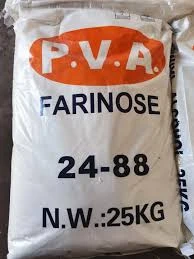The Versatility of Cellulose Polymer Nature's Gift to Modern Technology
Cellulose polymers stand as one of the most abundant biopolymers on Earth, derived primarily from the cell walls of green plants. This organic compound is a polysaccharide, consisting of linear chains of glucose molecules linked by β(1→4) glycosidic bonds. Its natural abundance, biodegradability, and remarkable functional properties have made cellulose a focal point in various fields, from food and textiles to pharmaceuticals and biocomposites.
Structure and Properties
The structure of cellulose is what gives it unique properties. The linear arrangement of glucose units allows for extensive hydrogen bonding between adjacent cellulose chains, facilitating the formation of crystalline structures. This inherent crystallinity imparts high tensile strength and stability to cellulose, making it an ideal material for reinforcement in composites. Moreover, its hydrophilic nature enables cellulose to interact with water, rendering it useful in various applications that require moisture retention.
Applications in Everyday Products
Cellulose polymers have found a myriad of applications across different industries. In the food industry, cellulose is used as a thickener, emulsifier, and stabilizer. Common products such as salad dressings, ice creams, and baked goods often contain cellulose derivatives to improve texture and shelf-life. Additionally, microcrystalline cellulose, a refined form of cellulose, is widely used as an anti-caking agent and bulking agent in dietary supplements and pharmaceuticals.
In textiles, cellulose fibers such as cotton and rayon are celebrated for their comfort, breathability, and versatility. The fashion industry capitalizes on these properties, integrating cellulose fibers into a range of clothing and home textiles. Innovations in the processing of cellulose have also led to the development of biodegradable fibers that provide an eco-friendly alternative to synthetic materials.
Innovations in Biocomposites
cellulose polymer

The quest for sustainable development has propelled cellulose polymers into the spotlight within the realm of biocomposites. By integrating cellulose with other biodegradable materials, researchers are pioneering composite materials that are both strong and lightweight. For example, cellulose nanofibers have shown immense potential in reinforcing plastics, resulting in composites that retain rigidity while significantly reducing weight. Such advancements are crucial in industries like automotive and aerospace, where reducing the weight of components can lead to improved fuel efficiency and reduced carbon emissions.
Additionally, cellulose-based biocomposites are finding applications in packaging. With an increasing demand for environmentally friendly packaging alternatives, cellulose's biodegradability offers a significant advantage over conventional petroleum-based plastics. Companies are exploring the use of cellulose films, which can decompose naturally, minimizing environmental impact and contributing to a circular economy.
Emerging Trends in Biotechnology
Research into cellulose polymers is not limited to traditional industries; it is increasingly intersecting with biotechnology. Cellulose is being explored as a substrate for the production of microbial fuels. The enzymatic breakdown of cellulose by certain microorganisms can yield bioethanol, a renewable energy source that could help mitigate reliance on fossil fuels.
Moreover, the potential of cellulose in biomedical applications is becoming apparent. Its biocompatibility and non-toxic nature make cellulose a suitable candidate for drug delivery systems, wound dressings, and tissue engineering scaffolds. Innovations in modifying cellulose structure at the molecular level are paving the way for advanced medical applications, enabling more effective and sustainable healthcare solutions.
Conclusion
Cellulose polymers exemplify how a simple and abundant natural resource can be transformed into a multi-functional material with wide-ranging applications. From enhancing food products and textiles to driving innovations in biocomposites and biotechnology, cellulose continues to play a pivotal role in advancing sustainability and functionality in various domains. As research progresses, the potential future applications of cellulose polymers promise to contribute even more significantly to both our ecological and technological landscapes, aligning with global efforts towards sustainable development. In a world increasingly oriented towards green solutions, cellulose stands out as a beacon of hope, merging nature's gifts with human ingenuity.
-
Rdp Powder: Key Considerations for Wholesalers in the Building Materials IndustryNewsJul.08,2025
-
Key Considerations for Wholesalers: Navigating the World of Hpmc - Based ProductsNewsJul.08,2025
-
Hpmc Detergent: Key Considerations for WholesalersNewsJul.08,2025
-
Key Considerations for Wholesalers: China Hpmc For Tile Adhesive, Coating Additives, Concrete Additives, and MoreNewsJul.08,2025
-
Crucial Considerations for Wholesalers: Navigating the World of Construction MaterialsNewsJul.08,2025
-
Key Considerations for Wholesalers Sourcing Additive For Cement, Additive For Concrete, Additive For Putty from Additive Manufacturer Shijiazhuang Gaocheng District Yongfeng Cellulose Co., Ltd.NewsJul.08,2025




